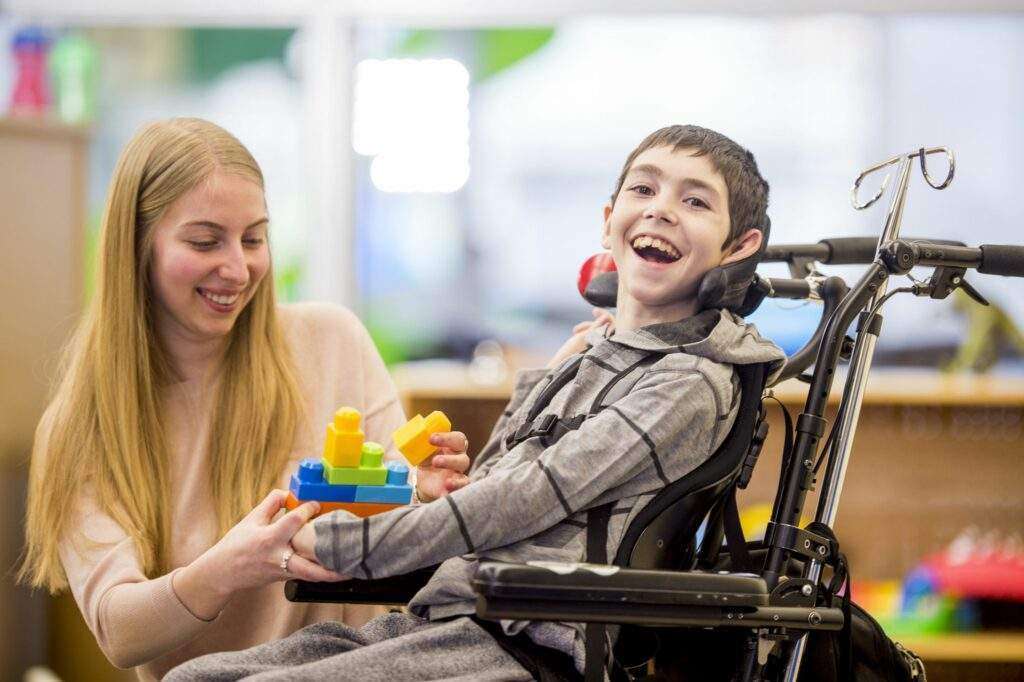
Cerebral palsy is a condition that affects the brain and spinal cord. Cerebral palsy can start at any time during a person’s life, affecting different people differently. However, it is rare for cerebral palsy to be caused by a specific medical condition or injury. Instead, it often develops from a combination of genetic and environmental factors that affect brain development. Here, we look at how cerebral palsy starts and why it can happen to some people but not others.
What Is Cerebral Palsy?
The term “cerebral palsy” refers to a group of conditions that cause the body to move incorrectly and develop differently than usual. The symptoms of cerebral palsy vary depending on how severe the condition is, but most people with the condition have problems with their movement and coordination.
How Is Cerebral Palsy Diagnosed?
Doctors diagnose cerebral palsy by reviewing the patient’s medical history and performing a series of tests to rule out other conditions that could be causing symptoms. These tests may include blood tests, MRI scans, and evaluations of the range of motion and function of a patient’s muscles. In some cases, doctors may also use a test called electroencephalography (EEG) to measure the electrical activity in the brain.
Once your doctor has confirmed a diagnosis of cerebral palsy, you will work closely with your team of healthcare professionals to develop a treatment plan that will allow you to maximize your functional abilities and minimize the effects of your condition.
What Are the Symptoms of Cerebral Palsy?
The most common symptoms of cerebral palsy include spasticity, uncontrolled muscle stiffness, tremors, involuntary movements or twitches in the arms and legs, and intellectual disability, which refers to speech and language development difficulties. Many children with cerebral palsy also have vision problems that affect their ability to see clearly.
Other common symptoms include difficulty walking or moving, difficulty swallowing, and difficulty breathing during sleep. Some people with cerebral palsy also experience gastrointestinal issues, including constipation, diarrhea, and vomiting. Over time, the severity of these symptoms can vary greatly between individuals.
Who Is At Risk for Developing Cerebral Palsy?
Although the exact cause of cerebral palsy remains unknown, it is thought that a variety of factors may increase the risk for this condition. Some studies have suggested that being full-term protects against cerebral palsy development. In contrast, others have suggested that premature birth may be a risk factor for developing the condition.
In addition, research has suggested that certain factors related to a mother’s health during pregnancy—such as infections or complications during childbirth—may contribute to her child’s development of cerebral palsy. However, these studies have not been fully confirmed. The exact risk factors for developing cerebral palsy are not fully understood at this time.
Is Cerebral Palsy Progressive?
Cerebral palsy is not a progressive condition. In other words, once a person has contracted the condition, it will continue to affect them throughout their life. The perceived degenerative effect of Cerebral palsy is due to the continuation of symptoms into adulthood. Since the child does not retain the mobility or cognition levels of childhood, the symptoms continue to develop further and are perceived as degeneration rather than progression.
The development of developmental disabilities in adults is seen so often that it is often mistakenly assumed that it is the cause of the child’s condition. This is not true, however. While many children and adult-onset cases are due to inherited disorders, other forms of the condition have no known cause.
How is Cerebral Palsy Treated?
Treatment options for children with cerebral palsy vary depending on the severity of the condition and their individual needs. In general, treatment is focused on reducing symptoms and limiting complications to improve the overall quality of life for the child. For more severe forms of the condition, surgery may be required to correct abnormalities in the bones, joints, or muscles or to provide corrective braces or other medical devices to help control movement.
Physical therapy is often recommended for children with milder forms of the condition to help improve muscle strength and coordination and reduce the impact of developmental delays on daily functioning. Most children with cerebral palsy receive treatment as part of a comprehensive treatment plan that includes a team of specialists such as pediatricians, physical therapists, and occupational and speech therapists.
Infants with mild to moderately severe CP can often be diagnosed by a physical examination of their motor skills and cognitive abilities. In more severe cases, it may be necessary to perform diagnostic testing, including an MRI or CT scan.
Conclusion
Cerebral palsy is a neurological disorder affecting the body’s motor functions (muscle control and movement). Individuals with this condition experience difficulty in performing everyday tasks such as walking, eating, getting dressed, or using the toilet.
While some forms can be attributed to a genetic defect, most forms of cerebral palsy are the result of brain damage that occurs during the early stages of pregnancy. In most cases, the cause of damage to the brain is a lack of oxygen caused by improper development or blood supply to the brain. The symptoms of cerebral palsy usually appear shortly after birth but may not become noticeable until later in childhood as the child grows and develops.
Although the exact cause of cerebral palsy is unknown in most cases, there are things you can do to reduce your risk of experiencing complications during pregnancy, such as high blood pressure, heart disease, and diabetes. Talk with your doctor about any medications you are taking, as these could also pose a risk to your baby’s development.